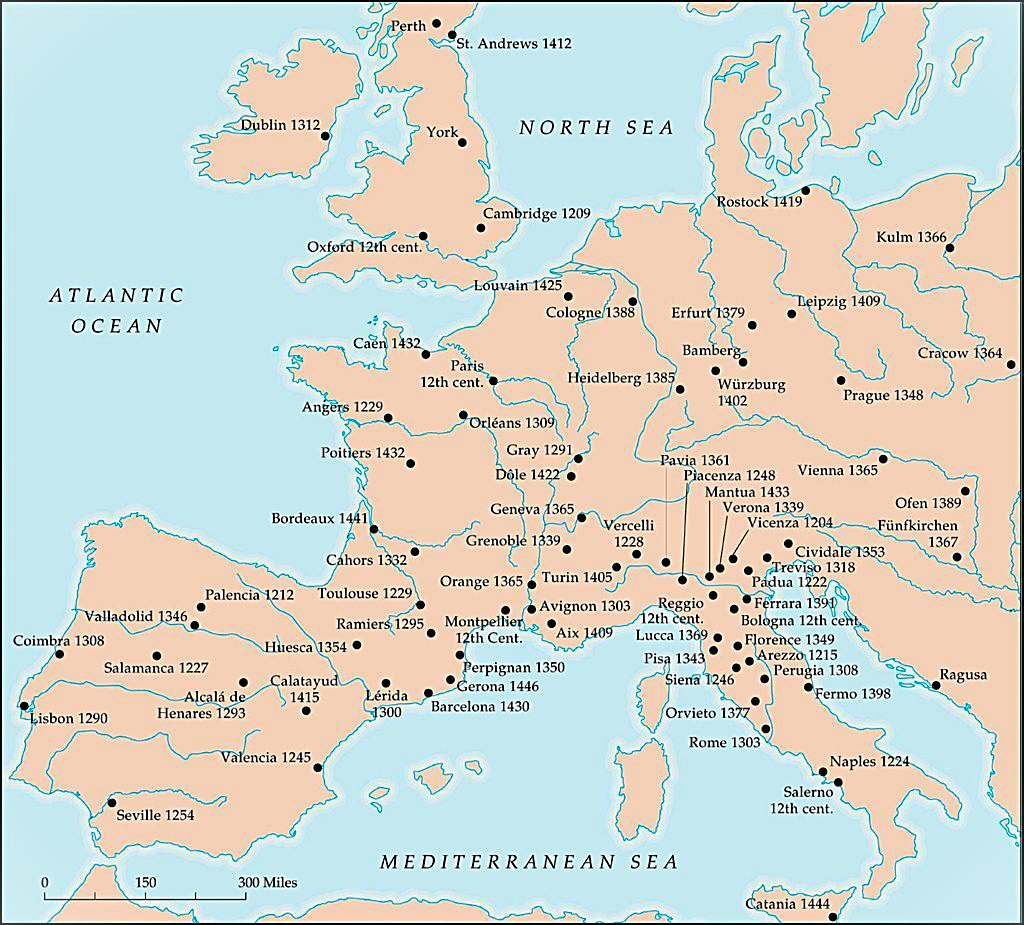Map found on Reddit
When we think of universities today, we imagine sprawling campuses, student loans, and coffee-fueled study sessions.
But the story of higher education began much more humbly in medieval Europe, where scattered across the continent, centers of learning emerged that would shape Western civilization for centuries to come.
The map you’re looking at shows something remarkable: by the 12th through 15th centuries, Europe had developed an extensive network of universities stretching from Scotland to Sicily, from Portugal to Poland.
These weren’t just local schools. They were international institutions where students and professors traveled across borders, united by a common language of scholarship: Latin.
The Pioneers: Bologna and Paris
The University of Bologna, established around 1088, often claims the title of the world’s oldest university in continuous operation.
It started as a law school, and interestingly, students held the power there. They hired and fired professors, set curricula, and even fined instructors who started lectures late or skipped material.
Paris followed closely behind in the 12th century, becoming the theology powerhouse of medieval Europe. If you wanted to debate the great questions of God and philosophy, Paris was your destination.
The intellectual ferment there gave us scholars like Thomas Aquinas and laid the groundwork for the Scholastic method that dominated medieval thought.
Why Universities Emerged When They Did
Several factors converged in the High Middle Ages to make universities possible.
Europe had achieved relative stability after centuries of invasions. Trade was expanding, cities were growing, and a merchant class emerged that needed literate administrators and lawyers. The Church, too, required educated clergy who could navigate complex theological and legal matters.
Ancient texts were being rediscovered, particularly Aristotle’s works, which had been preserved and translated by Islamic scholars. This influx of knowledge created both excitement and controversy, spurring intense debate and study that demanded institutional settings.
The Student Experience
Being a medieval university student was quite different from today’s experience. Students often began as young as 14 or 15.
They lived in boarding houses, frequently got into town and gown brawls with locals, and studied a curriculum centered on the seven liberal arts: grammar, rhetoric, logic, arithmetic, geometry, music, and astronomy.
Lectures were exactly that: professors reading from texts since books were scarce and expensive. Students took notes, participated in disputations where they had to defend philosophical positions, and eventually earned degrees that would open doors across Europe.
A Lasting Legacy
What’s truly striking about this medieval university network is its endurance. Many institutions on this map still exist today: Oxford, Cambridge, Salamanca, Bologna, Paris (now restructured but still there), and dozens more. They created the model we still follow: faculties, degrees, academic freedom, and the idea that pursuing knowledge is a worthy endeavor in itself.
These medieval scholars couldn’t have imagined the modern university, but they built the foundation we still stand on. Every graduation ceremony, every doctoral defense, every academic debate traces its lineage back to those medieval halls where curious minds gathered to push the boundaries of human understanding.
Help us out by sharing this map:
